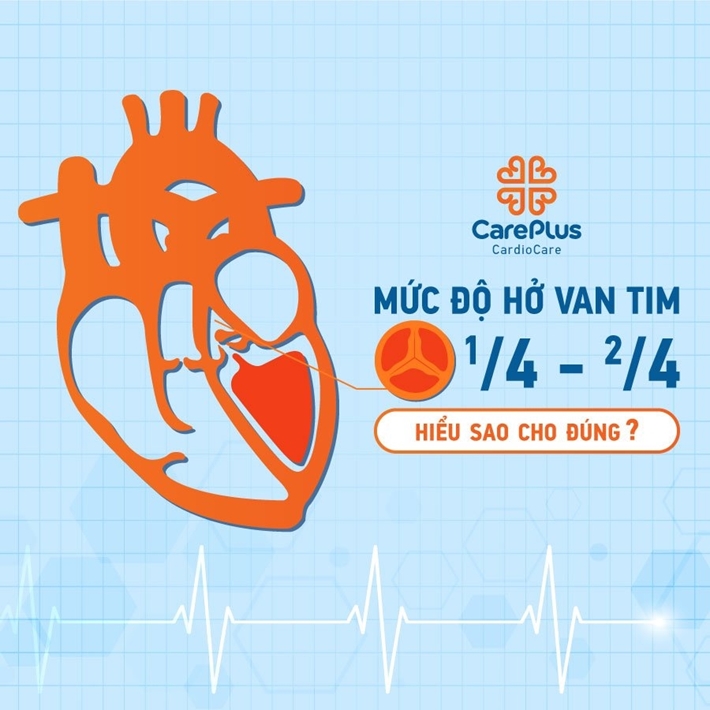Heart valve disease 1/4, 2/4,... How to understand correctly?
Van tim là cấu trúc nằm giữa các buồng tim, các động mạch lớn trong tim. Có thể ví van tim giống như cánh cửa, đảm bảo máu di chuyển giữa các "căn phòng" trong tim theo một chiều nhất định. Hở van tim tức là cánh cửa này đóng không kín, làm cho có dòng máu lọt qua khe hở quay trở lại buồng tim.

7/24/2021 9:43:40 PM
Heart valves are structures located between the chambers of the heart, the large arteries in the heart. The heart valve can be likened to a door, ensuring that blood moves between the "rooms" in the heart in a specific direction. Heart valve regurgitation means that this door does not close tightly, allowing blood to flow through the opening and return to the heart chamber.
When going to the doctor, many patients think they have heart disease when they read a result like "tricuspid regurgitation 1/4". This regurgitation grade does not accurately assess the severity of regurgitation and can cause undue stress for the patient.
The classification base on the spread of blood flow through the non-closed valvular site; the 3/4 open current spreads further than the 1/4 available current. But what's wrong is that the farther the blood flow, the more it doesn't necessarily correspond to the more regurgitation of the heart valve. You can test it when using a water hose to water plants: when you squeeze the nozzle, the water flows farther, but the amount of water for the plants will be less than when you let the water flow naturally.
Furthermore, not all cases of valvular regurgitation are serious illnesses. In ordinary, perfectly healthy people, echocardiography can detect mild valvular regurgitation: tricuspid regurgitation (80-90% of patients), pulmonary valve regurgitation (70-80). % of patients), mitral regurgitation (70-80% of patients) without any associated structural abnormalities, without affecting cardiac activity, and without requiring any treatment. Like a door, no matter how good, you can still see the light through the gap when closed. According to the American Society of Echocardiography (ASE), an annual echocardiogram is unnecessary for this mild valvular regurgitation because it can cause undue anxiety to the patient.
Therefore, according to current ASE recommendations, to know if valvular regurgitation is severe or not, it is necessary to carefully describe the structure and mobility of the leaflets, direction of reflux, and abnormalities. Accompanying cardiac structures such as dilated cardiac chambers, the magnitude of the retrograde flow (which is the image of a faucet with a wide or narrow "output" above), etc.
When you miss the notice of valvular regurgitation according to the type of grade 1/4, 2/4 do not worry but consult the professional cardiologists, especially Repeat echocardiography with the new grade for accurate assessment.